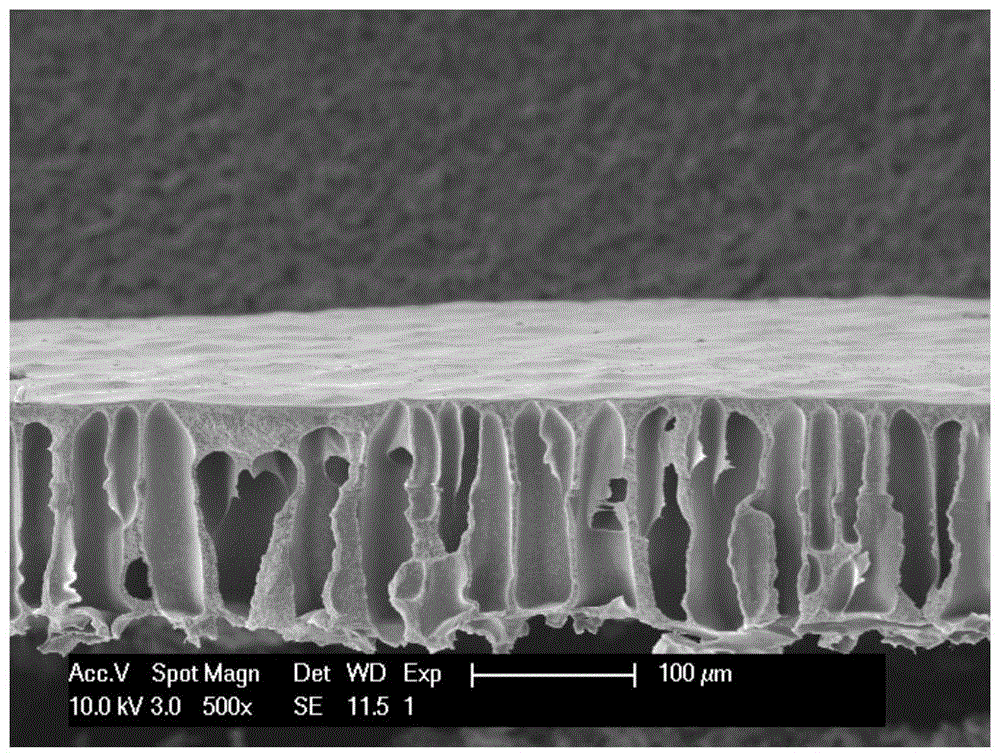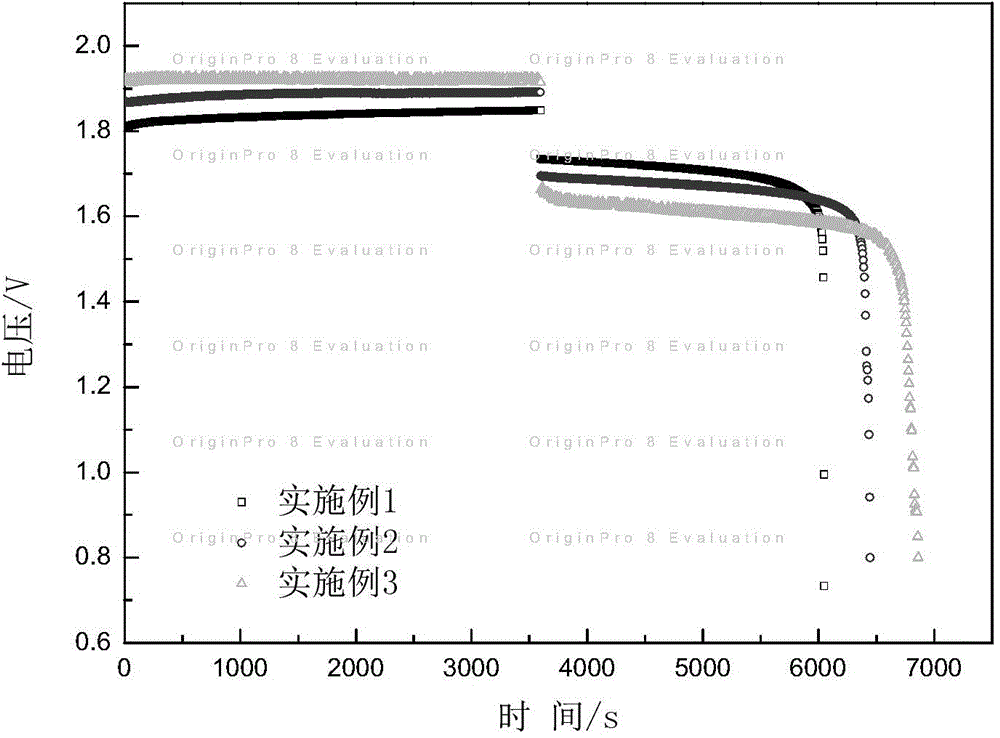Application of porous separating membrane in zinc-bromine flow battery
A zinc-bromine flow battery and separation membrane technology, which is applied in the direction of regenerative fuel cells, battery pack components, circuits, etc., can solve the problems of limiting the industrial application of membranes, high price, etc., and achieve mass production, simple preparation method, Avoiding the effect of reducing the oxidative stability of the polymer
- Summary
- Abstract
- Description
- Claims
- Application Information
AI Technical Summary
Problems solved by technology
Method used
Image
Examples
Embodiment 1
[0024] Dissolve 7.5 grams of polyacrylonitrile in 50ml of DMSO, stir for 5 hours, spread the polymer solution on a glass plate, then quickly immerse in 5L of water, and solidify for 5 minutes to form a porous separation membrane. figure 2 A cross-sectional SEM picture of the prepared membrane material is given, showing a regular pore structure. The zinc-bromine flow battery is assembled by using the prepared porous separation membrane, the activated carbon felt is the catalytic layer, the graphite plate is the bipolar plate, and the effective area of the membrane is 9cm -2 , with a current density of 20mAcm -2 , the concentration of zinc bromide in the electrolyte is 2.0M. The assembled flow battery has a current efficiency of 68%, a voltage efficiency of 93%, and an energy efficiency of 63%.
Embodiment 2
[0026] Dissolve 7.5g of polyacrylonitrile in 30mlDMSO+20mlTHF, stir for 5 hours, and spread the resulting polymer solution on a glass plate, volatilize for 10s, then quickly immerse in 5L of water, and solidify for 10 minutes to form a porous separation membrane.
[0027] The zinc-bromine flow battery is assembled by using the prepared porous separation membrane, the activated carbon felt is the catalytic layer, the graphite plate is the bipolar plate, and the effective area of the membrane is 9cm -2 , with a current density of 20mAcm -2 , the concentration of zinc bromide in the electrolyte is 2.0M. The assembled flow battery has a current efficiency of 79%, a voltage efficiency of 87%, and an energy efficiency of 69%.
Embodiment 3
[0029] Dissolve 7.5g of polyacrylonitrile in 30mlDMSO+10mlTHF, stir for 5 hours, spread the resulting polymer solution on a glass plate, volatilize for 20s, then quickly immerse in 5L of water, solidify for 10 minutes, and form a porous separation membrane.
[0030] The zinc-bromine flow battery is assembled by using the prepared porous separation membrane, the activated carbon felt is the catalytic layer, the graphite plate is the bipolar plate, and the effective area of the membrane is 9cm -2 , with a current density of 20mAcm -2 , the concentration of zinc bromide in the electrolyte is 2.0M. The assembled flow battery has a current efficiency of 91%, a voltage efficiency of 82%, and an energy efficiency of 75%.
[0031] Through embodiment 1~3 battery performance figure 2 The comparison shows that as the membrane pore size decreases, the coulombic efficiency of the battery increases, the voltage efficiency remains at the same level, and the energy efficiency also increa...
PUM
| Property | Measurement | Unit |
|---|---|---|
| thickness | aaaaa | aaaaa |
| size | aaaaa | aaaaa |
| porosity | aaaaa | aaaaa |
Abstract
Description
Claims
Application Information
 Login to View More
Login to View More - R&D
- Intellectual Property
- Life Sciences
- Materials
- Tech Scout
- Unparalleled Data Quality
- Higher Quality Content
- 60% Fewer Hallucinations
Browse by: Latest US Patents, China's latest patents, Technical Efficacy Thesaurus, Application Domain, Technology Topic, Popular Technical Reports.
© 2025 PatSnap. All rights reserved.Legal|Privacy policy|Modern Slavery Act Transparency Statement|Sitemap|About US| Contact US: help@patsnap.com


